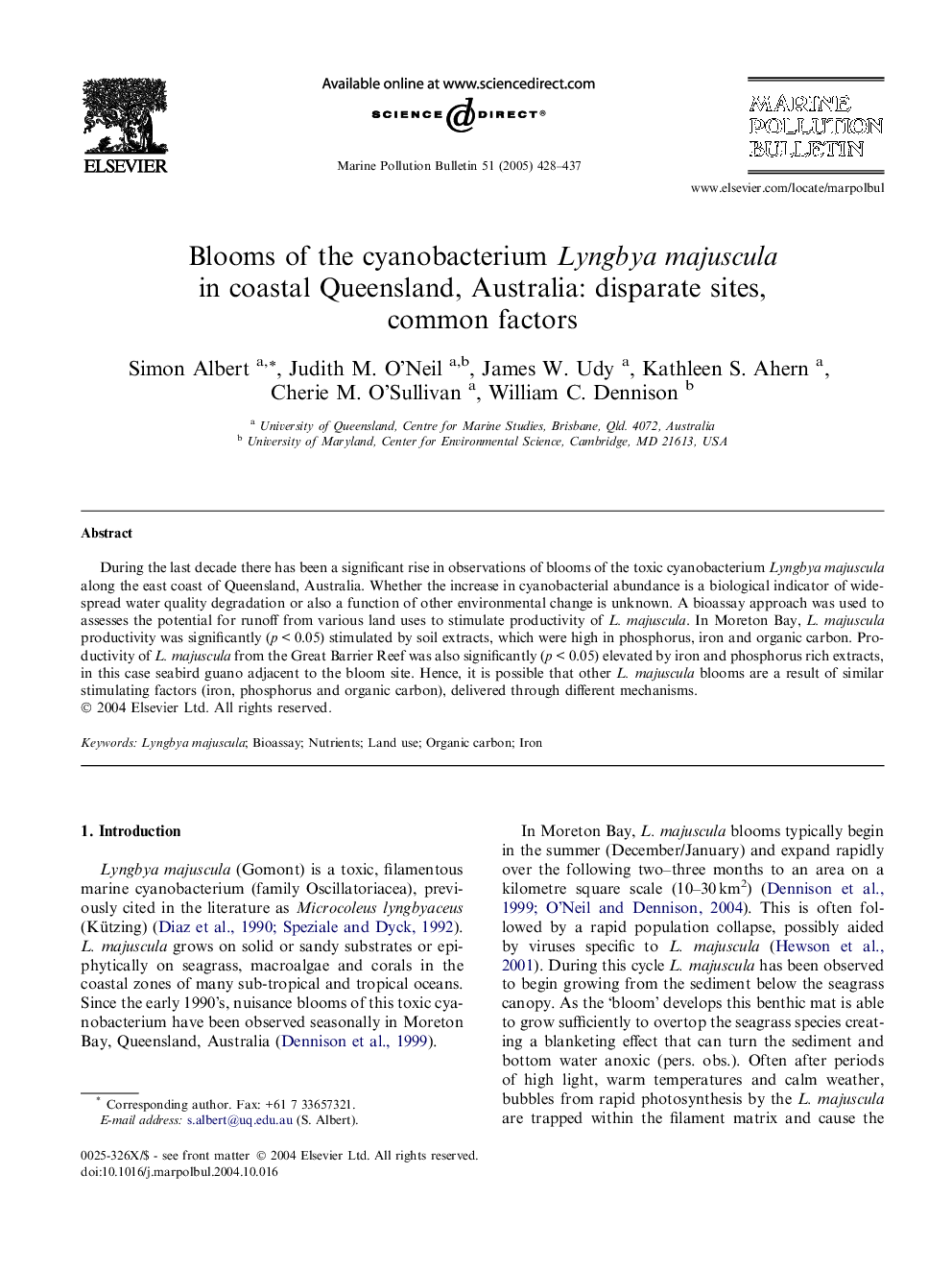| Article ID | Journal | Published Year | Pages | File Type |
|---|---|---|---|---|
| 9465897 | Marine Pollution Bulletin | 2005 | 10 Pages |
Abstract
During the last decade there has been a significant rise in observations of blooms of the toxic cyanobacterium Lyngbya majuscula along the east coast of Queensland, Australia. Whether the increase in cyanobacterial abundance is a biological indicator of widespread water quality degradation or also a function of other environmental change is unknown. A bioassay approach was used to assesses the potential for runoff from various land uses to stimulate productivity of L. majuscula. In Moreton Bay, L. majuscula productivity was significantly (p < 0.05) stimulated by soil extracts, which were high in phosphorus, iron and organic carbon. Productivity of L. majuscula from the Great Barrier Reef was also significantly (p < 0.05) elevated by iron and phosphorus rich extracts, in this case seabird guano adjacent to the bloom site. Hence, it is possible that other L. majuscula blooms are a result of similar stimulating factors (iron, phosphorus and organic carbon), delivered through different mechanisms.
Related Topics
Physical Sciences and Engineering
Earth and Planetary Sciences
Oceanography
Authors
Simon Albert, Judith M. O'Neil, James W. Udy, Kathleen S. Ahern, Cherie M. O'Sullivan, William C. Dennison,
